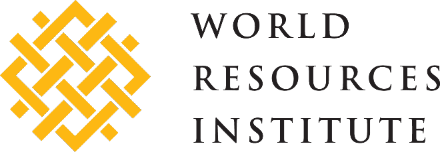Tool Type: databases and indexes
Tools that aggregate, store, and organize large datasets or provide indexed rankings, often used to offer insights or create structured references on specific environmental or crime-related topics. Examples include indexes ranking corruption or illegal activity by country.
Triton
Triton analyzes the ownership structures of the world’s industrialized fishing fleets, revealing the linkages between fishing vessels at sea and the companies who profit from their activities. While free to use, Triton is still invite-only – it may be accessed by submitting a form linked on the tool’s webpage.
Wildlabs Database
Global conservation technology community of 7,000 people in 120 countries discussing 1,300 topics like biologging, camera traps, and machine learning.
Wildlife Insights
Using artificial intelligence and the power of big data to provide scientists an unequaled view into the habits and habitats of wildlife, data that is critical for crafting smart conservation policies. It takes “animal selfies” through motion-detector cameras — known as camera traps — to snap thousands of photos a day of animals rarely seen by human eyes. As the largest camera-trap database in the world, Wildlife Insights has the potential to transform wildlife conservation by providing reliable, frequent and up-to-date information on myriad species that are largely invisible to science and conservation practitioners.
Wildscan
App to combat illegal wildlife trade across Asia and West Africa. It was designed to help frontline enforcement agencies, private sector employees, and the general public correctly identify, report, and handle animals and plants frequently caught in the illegal wildlife trade. WildScan hosts a comprehensive library containing information on over 600 endangered species and illegal wildlife products. The app’s identification wizard component poses four simple questions to assist users in identifying the appropriate species. It is expanding to be used globally.
Global Fishing Legislative Database
Explore the laws and regulation that govern fishing around the world.
Marine Aquarium Biodiversity and Trade Flow
Researchers from Roger Williams University and the New England Aquarium developed this interactive web tool to illuminate and evaluate the global shipping pathways of the aquarium trade. Registered users can examine exporting countries and the ports where the fish and invertebrates enter the U.S. Additional features include selecting a species/group of species to determine origin and volume in the trade. The web portal is the culmination of several years of work, including tabulating the volume and diversity of marine ornamental species entering the U.S. via aquarium trade pathways.
Ouro Alvo/Ouroteca
“Gold Library” – database with samples obtained from different parts of Brazil that allows the federal police to create a chemical fingerprint of each sample, which they can then use to cross-reference the origin of seized or suspicious gold.
RhODIS
Database that gathers DNA profiles and the location of rhinos in South Africa. When authorities confiscate rhino horn, they can run a DNA test to determine its exact origin. This is intended to serve as a deterrent to poachers and assist in prosecutions.
SEINEF
Web platform that requires actors along the supply chain to enter volume and authorization information. The system allows government officials and law enforcement officers to follow the flow of timber products from the forest to buyers, and identify discrepancies in volumes, species and products reported.
AML Index
Published annually, the public edition of the Basel AML Index ranks countries with sufficient data to calculate a reliable risk score. It is a snapshot of global ML/TF risks and progress by countries and regions over time.


